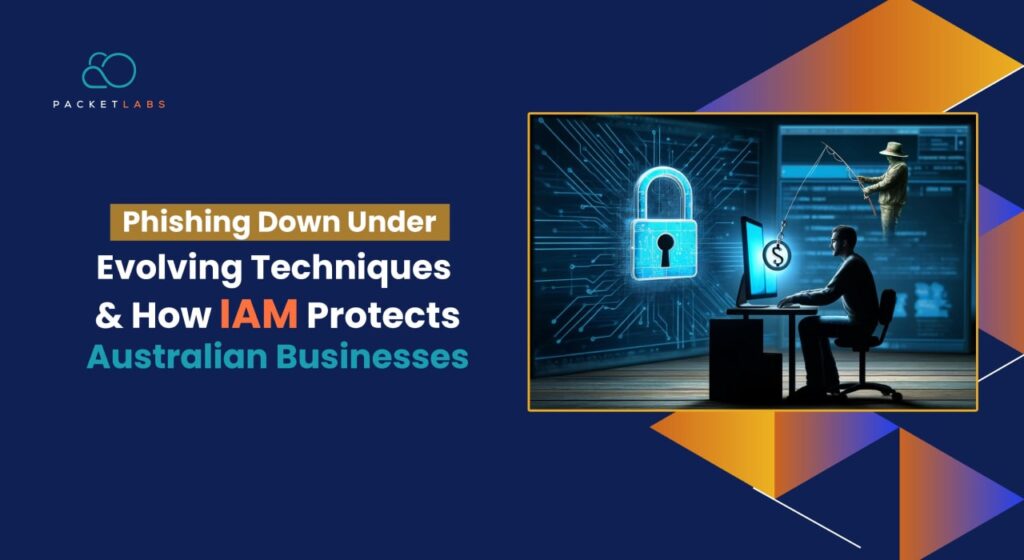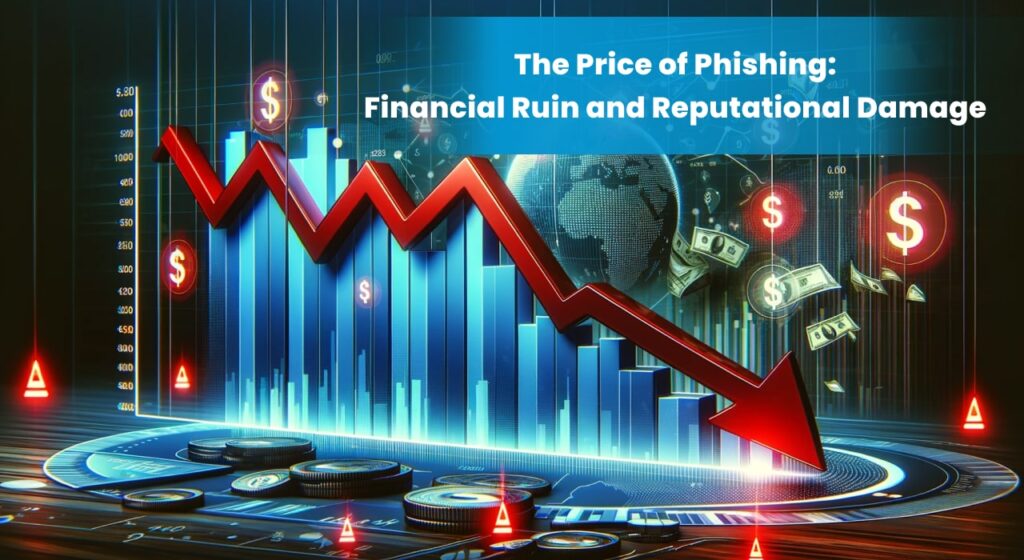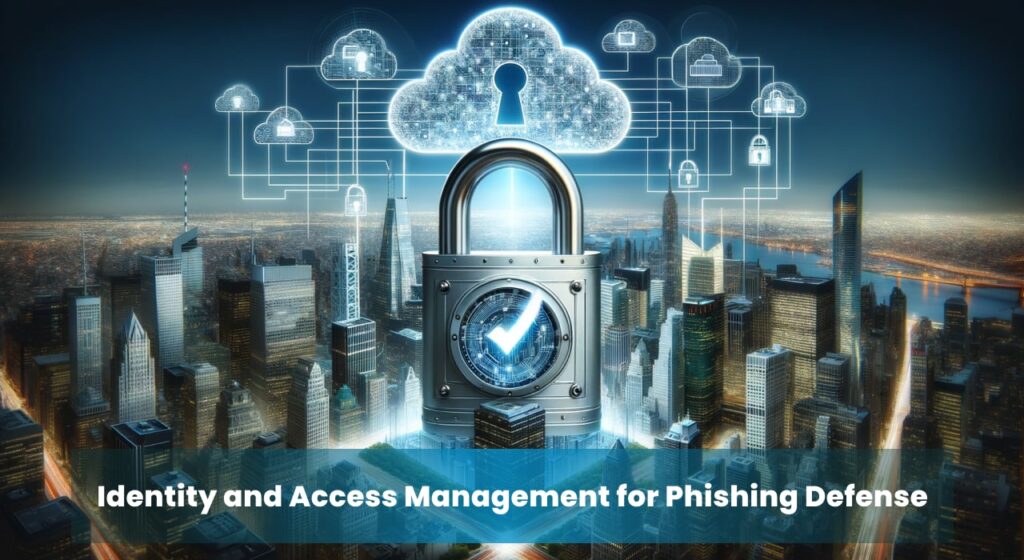
The Australian business landscape thrives on a robust digital ecosystem. However, this very reliance on online platforms exposes organisations to a growing threat – phishing. Phishing attacks attempt to deceive employees into divulging sensitive information or clicking malicious links. These deceptive tactics can have a crippling impact. According to a 2022 report by the Australian Cyber Security Centre (ACSC), nearly half (46%) of Australian organisations analysed were victims of spear phishing, a targeted form of phishing attack. This translates to a significant financial burden, with the ACSC estimating the annual cost of cybercrime to Australian businesses at over $6 billion.
Fortunately, there are proactive measures businesses can take to fortify their defences. Identity and Access Management (IAM) solutions offer a multi-layered approach to securing access to critical data and systems. IAM regulates who can access information, what level of access they have, and how they access it. By implementing robust IAM protocols, businesses can significantly reduce the risk of successful phishing attacks, even when employees encounter sophisticated scams.
This article delves into the evolving landscape of phishing attacks in Australia, exploring the various techniques employed by cybercriminals. We will then examine the detrimental consequences of successful phishing attempts for Australian businesses. Finally, the article explores how IAM solutions can be leveraged to mitigate these risks, outlining practical steps for implementation and highlighting the importance of user awareness programs.
The Phishing Landscape in Australia

The Australian cybersecurity landscape is constantly evolving as cybercriminals refine their tactics. Phishing attacks have become increasingly sophisticated, moving beyond generic emails to target individuals with meticulously crafted messages.
One prominent technique is spear phishing, where attackers meticulously research their targets to craft emails that appear legitimate. These emails may impersonate trusted sources like colleagues, superiors, or even well-known organisations. The content often leverages urgency or exploits current events to pressure recipients into clicking malicious links or surrendering sensitive information.
Beyond email, cybercriminals are exploiting the pervasiveness of mobile communication for phishing attempts. Vishing, or voice phishing, involves deceptive phone calls where attackers impersonate legitimate entities to trick victims into revealing confidential details. Smishing, the SMS equivalent of phishing, uses text messages containing malicious links or urging recipients to call fraudulent phone numbers.
Social engineering tactics are another weapon in the phisher’s arsenal. These tactics play on human emotions and psychology, such as fear, trust, or a sense of urgency, to manipulate victims into compromising security protocols. For instance, a phishing email might pose as an IT support representative, warning of a critical system vulnerability and prompting the recipient to click a link to “fix” the issue.
The impact of these evolving tactics is evident in recent high-profile attacks on Australian organisations. In November 2021, a major telecommunications company fell victim to a phishing scam, with attackers successfully impersonating senior management and diverting AUD 7.5 million. This incident serves as a stark reminder of the growing sophistication and financial repercussions of phishing attacks.
| Phishing Technique | Delivery Method | Common Tactics | Examples |
|---|---|---|---|
| Spear Phishing | Impersonation (colleague, CEO, known organisation), Urgency, Current events | Email appearing to be from IT department about a critical system vulnerability requiring immediate action. | |
| Whaling | Impersonation (senior executive), Invoices with fake payment details | Email from a supposed CEO requesting a transfer of funds to a new supplier. | |
| Smishing | SMS | Malicious links, Urgency, Fake competition entries | Text message claiming your phone number has won a prize and urging you to click a link to claim it. |
| Vishing | Phone Call | Impersonation (bank, tax office), Threat of legal action | Phone call from someone claiming to be from your bank, stating suspicious activity on your account and requesting personal details. |
| Angler Phishing | Social Media | Fake profiles, Fake competitions, Malicious links | Social media post from a seemingly legitimate company offering a free product in exchange for clicking a link. |
This table summarizes different phishing techniques commonly used in Australia, referencing the Australian Cyber Security Centre.
How Phishing Attacks Businesses

The consequences of successful phishing attacks extend far beyond the initial compromise of individual accounts. Businesses that fall victim to these scams face a multitude of detrimental effects.
One of the most immediate repercussions is a data breach. Phishing emails often trick employees into surrendering sensitive information, such as login credentials or customer data. This stolen information can then be used for fraudulent activities, causing significant financial losses. For instance, a 2022 report by the Australian Competition and Consumer Commission (ACCC) revealed that identity theft scams cost Australians over $1.3 billion in the previous year [ Australian Competition and Consumer Commission].
Beyond financial losses, phishing attacks can also lead to operational disruptions. When employees fall victim to a scam, critical systems and data may become compromised, hindering normal business operations. This can range from temporary outages to complete system lockdowns, impacting productivity and customer service.
The reputational damage caused by a phishing attack can be equally devastating. News of a data breach or security lapse can erode consumer trust and damage a company’s brand image. Customers may become wary of sharing personal information or conducting business with an organisation perceived as vulnerable to cyberattacks.
The financial burden doesn’t end with the immediate costs of a breach. Businesses often face increased IT security expenses in the aftermath of a phishing attack. This can include investments in security awareness training for employees, enhanced security protocols, and potential upgrades to IT infrastructure.
The human cost of phishing attacks shouldn’t be overlooked either. When employees fall victim to a scam, they may experience feelings of stress, anxiety, and even shame. This can lead to decreased morale and a decline in overall workplace productivity.
A stark example of the multifaceted impact of phishing attacks is the case of Medibank, a major Australian health insurance provider, in October 2023. The company reportedly fell victim to a sophisticated spear phishing campaign, resulting in the compromise of customer data, including names, dates of birth, addresses, and health information. This incident not only caused significant financial losses and reputational damage but also raised concerns about the privacy and security of sensitive health data [ABC News].
Identity & Access Management (IAM) for Phishing Defense

In the ongoing battle against cyber threats, Identity and Access Management (IAM) emerges as a critical line of defense. IAM is a comprehensive framework that governs how users access an organisation’s IT systems and resources. It ensures the right people have the right access, at the right time, and for the right reasons. This multi-layered approach plays a vital role in mitigating the risks associated with phishing attacks.
At the core of IAM lie three fundamental components:
- User Authentication: This process verifies the identity of a user attempting to access a system. Traditional methods like username and password combinations are increasingly vulnerable. IAM offers robust alternatives like multi-factor authentication (MFA), which requires additional verification steps beyond a password, significantly bolstering security.
- Authorization: Once a user’s identity is confirmed, IAM determines the level of access they are granted within the system. This principle of least privilege ensures users only have the access permissions necessary to perform their designated tasks. This minimizes the potential damage caused by compromised credentials, as even if a phisher gains access, their ability to exploit sensitive data or functionalities would be restricted.
- Access Control: IAM enforces the defined access levels by continuously monitoring and regulating user activity within the system. This includes controlling the types of resources users can access, the actions they can perform, and the timeframes within which they can access them.
By implementing these core principles, IAM solutions significantly hinder the effectiveness of phishing attacks in several ways:
- Mitigating Compromised Credentials: Stronger authentication methods like MFA make it considerably harder for phishers to leverage stolen credentials for unauthorized access. Even if a user falls victim to a phishing scam and unknowingly surrenders their login information, the additional verification steps required by MFA significantly reduce the risk of successful infiltration.
- Limiting Damage: The principle of least privilege ensures that even if a phishing attempt succeeds, the damage caused is minimized. By granting users only the access necessary for their specific roles, IAM restricts phishers’ ability to access or manipulate critical data or functionalities within the system.
- Enhanced Detection: Continuous monitoring of user activity allows IAM systems to detect anomalies and suspicious behavior patterns. This can include attempts to access unauthorized resources, unusual login attempts from unfamiliar locations, or sudden spikes in activity outside of regular working hours. By identifying these red flags, IAM can trigger alerts and prompt further investigation, potentially stopping an attack in its tracks.

Implementing IAM in Australian Businesses

Equipping an organisation with a robust IAM solution is a proactive step towards mitigating phishing attacks and safeguarding sensitive data. However, successful implementation requires careful planning and consideration.
The first step involves conducting a thorough assessment of the business’s specific needs and security risks. This analysis should identify the types of data requiring the highest level of protection, user access patterns, and potential vulnerabilities. Understanding these factors allows businesses to select an IAM solution with features tailored to address their unique security landscape.
Australian businesses come in all shapes and sizes, and the ideal IAM solution will reflect that diversity. A scalable solution can adapt to the evolving needs of a growing organisation, while cost-effectiveness is crucial for businesses with limited budgets. Consulting with cybersecurity specialists can be invaluable in navigating the options and selecting the most appropriate IAM solution.
The most sophisticated IAM system remains ineffective without a well-informed user base. Regular security awareness training programs are essential for educating employees about phishing tactics and the importance of robust password hygiene. Empowering employees to identify and report suspicious activity strengthens the overall security posture of the organisation.
Finally, it’s crucial to acknowledge the regulatory environment in Australia. The Australian Privacy Principles (APPs), outlined by the Office of the Australian Information Commissioner (OAIC), mandate specific data security obligations for businesses. Implementing a robust IAM solution demonstrates a commitment to data security compliance and helps businesses navigate the evolving regulatory landscape.
The Australian business landscape faces a constantly evolving threat from phishing attacks. These sophisticated scams target individuals and exploit human vulnerabilities to steal sensitive data and disrupt operations. The financial and reputational consequences of successful attacks can be significant.
Implementing a robust Identity and Access Management (IAM) solution offers a powerful line of defense. IAM strengthens user authentication, enforces access controls, and monitors user activity, significantly reducing the risk of compromise. However, a holistic approach is crucial. User awareness training and adherence to data security regulations are equally important in safeguarding an organisation’s digital assets.
For further guidance on implementing IAM or mitigating phishing threats, explore resources offered by the Australian Cyber Security Centre or consider consulting cybersecurity professionals to tailor a strategy for your specific needs.
